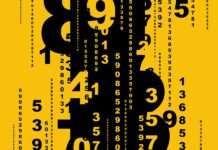The Sarfaesi framework gives a clear advantage to banks and financial institutions whose loans have become non-performing assets (NPA). Under it, an NPA can be reconstructed and turned into a marketable asset. In fact, banks and financial institutions have no other option than to take part in asset reconstruction. The Securitisation and Reconstruction of Financial Assets and Enforcement of Security Interest Act, 2002 (Sarfaesi act) is now the basis for all asset reconstruction mechanisms in India.

Managing partner
Lex Favios
However, some assets are outside the ambit of the Sarfaesi act. Section 31 provides that the act does not apply to any security interest created over agricultural land. This means that banks and financial institutions that grant loans can attach all properties of the borrower if a loan became an NPA, except agricultural land. The debt recovery mechanism in relation to such land lies with the Debt Recovery Tribunal (DRT). This process is known to be long and drawn out.
The Supreme Court, in a significant interpretation, has now held that agricultural land offered as security is not exempt from the provisions of the Sarfaesi act, if it is not actually being used as such or if agricultural activities are not being carried out on it. In the recent case of K. Shreedhar v M/S Raus Constructions Pvt Ltd and Ors, the borrower successfully applied to the high court to reverse the DRT’s decision that the agricultural lands in question were not exempted from the Sarfaesi act under section 31(i). The secured creditor and purchaser at auction appealed to the Supreme Court.

Head of the corporate practice
Lex Favios
The court found that the debtor had only produced revenue records in evidence, whereas the creditor had adduced proof of the use to which the land was being put. In analysing the burden of proof of the parties, the Supreme Court held that the high court had erred in a material way by shifting the burden to the secured creditor to prove that the properties were non-agricultural lands or had been put to non-agricultural use. The burden of proving that the land or its use fell within the exemption was on and remained with the debtor. The Supreme Court also found that the high court should not have accepted the application; the debtor should have appealed instead to the Debt Recovery Appellate Tribunal (DRAT).
Section 18 of the Sarfaesi act provides an appeal mechanism to the DRAT against an order of the DRT, in which the appeal has to be filed within 30 days from the date of the order, after depositing an amount not less than 25% of the total debt. The Supreme Court held that the application to the high court was made by the debtor solely to circumvent the provisions governing the appeal to the DRAT. In particular, the debtor was trying to avoid paying the deposit of 25% of the debt.
The Supreme Court overturned the decision of the high court and restored the verdict of the DRT, holding that the agricultural lands used as security for the debt would not be exempted under the provisions of the Sarfaesi act if they are not actually being used as agricultural lands or if no agricultural activities are undertaken on them. Further, the burden of proving the opposite lies with the borrower.
This landmark judgment will come as significant relief to banks and financial institutions. Attaching borrowers’ land and real property is the preferred way of property attachment for banks and financial institutions when they provide loans because of the stability this provides. Due to the exception in the Sarfaesi act, banks and financial institutions were unable to attach agricultural lands and had to resort to the DRT mechanism in order to obtain relief through the securitisation and reconstruction of NPAs. After this judgment, the onus of proving agricultural lands are being used for agricultural purpose rests with the debtor. If the borrower is unable to prove this, banks and financial institutions are free to attach agricultural land under the Sarfaesi act and obtain due relief through this route.
It will be interesting to see whether this decision of the Supreme Court improves access to finance for those unable or unwilling to farm traditional agricultural land. Now that banks and financial institutions are reassured that they can reconstruct assets if they become NPAs, they may be more willing to lend to those whose assets consist of agricultural land.
Sumes Dewan is managing partner and Tanya Mishra is the head of the corporate practice at Lex Favios.

E-299 Greater Kailash-I,
New Delhi – 110 048
Contact details:
T: +91-11-41435188
E: admin@lexfavios.com
http://www.lexfavios.com/


























